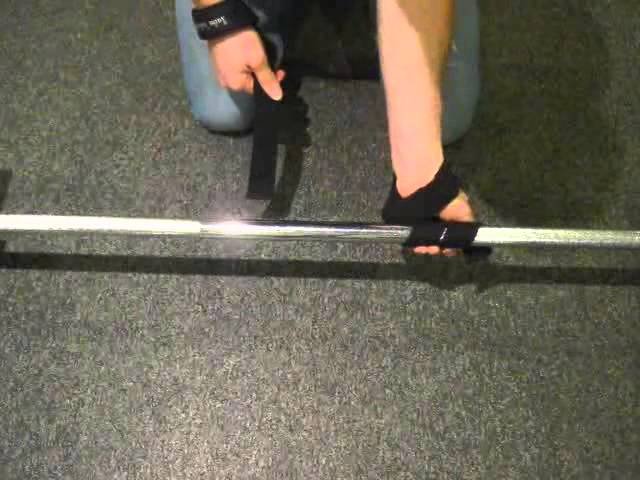Weightlifting Straps: Myths & Understanding Their Limitations
In the world of strength training, weightlifting straps have often been hailed as a game-changer, a secret weapon for overcoming grip strength limitations and unlocking new levels of performance. They promise to transform your lifting sessions, allowing you to tackle heavier weights with ease and confidence. But are weightlifting straps truly the miracle solution they're often portrayed to be?
As with many things in fitness, the reality is more nuanced than meets the eye. While weightlifting straps certainly have their benefits, there's a lot more to consider before declaring them your lifting savior. In this blog, we're going to peel back the layers and delve deep into the world of weightlifting straps. We'll explore what they are, their intended benefits, why they may not be as helpful as commonly believed, and the potential risks associated with relying on them too heavily.
So, let's start at the beginning. What exactly are weightlifting straps? At their core, weightlifting straps are simple yet ingenious tools designed to improve grip strength and assist in handling heavier weights. Crafted from durable materials like nylon or leather, these straps wrap securely around your wrists and the barbell or dumbbell, providing additional support during your lifts. They essentially act as an extension of your grip, helping you maintain a secure hold on the weight throughout each repetition.
The intended benefits of weightlifting straps are clear. First and foremost, they promise to enhance grip strength, allowing you to maintain a firm grasp on the weight even when your hands would otherwise falter. This can be particularly beneficial for exercises like deadlifts, rows, and shrugs, where grip strength often serves as the limiting factor. Additionally, by reducing the reliance on grip strength alone, straps enable lifters to handle heavier loads, potentially leading to greater gains in overall strength and muscle mass. And let's not forget about the fatigue factor – straps can help alleviate strain on the forearms during high-volume or intense lifting sessions, allowing you to push through those final reps with less discomfort.
Intended Benefits of Weightlifting Straps:
Enhance grip strength for a secure hold on weights, especially in exercises like deadlifts, rows, and shrugs where grip strength is crucial.
Reduce reliance on grip strength alone, allowing for handling heavier loads and potential gains in overall strength and muscle mass.
Alleviate forearm strain during intense lifting sessions, facilitating the completion of final reps with less discomfort.
However, despite these enticing benefits, weightlifting straps are not without their drawbacks. One of the most significant concerns is the potential for dependency. Relying too heavily on straps can lead to an overreliance on external support, ultimately hindering the natural development of grip strength. This can create a vicious cycle where the more you use straps, the weaker your grip becomes, leading to an increased need for their use in future workouts. Furthermore, improper use of straps or lifting excessively heavy weights can significantly increase the risk of injuries, particularly to the wrists, elbows, and shoulders. Straps can also inadvertently encourage poor lifting technique, as some lifters may use them as a crutch to compensate for weaknesses in form or strength.
Drawbacks of Weightlifting Straps:
Potential for dependency on external support, hindering natural grip strength development and creating a cycle of reliance on straps.
Risk of injuries, particularly to the wrists, elbows, and shoulders, with improper use or lifting excessively heavy weights.
Encourage poor lifting technique if used as a crutch to compensate for weaknesses in form or strength.
So, where does this leave us? Should we abandon weightlifting straps altogether in favor of traditional grip training methods? Not necessarily. Like any tool, weightlifting straps can be valuable when used appropriately and in moderation. However, it's essential to approach their use with caution and a critical eye. Rather than relying solely on straps to boost your lifting performance, it's crucial to prioritize proper form, technique, and overall grip strength development. Incorporating exercises specifically targeted at improving grip strength, such as farmer's carries or hanging leg raises, can help maintain a balanced approach to training and mitigate the risk of dependency on straps.
Conclusion:
Weightlifting straps can be valuable when used judiciously but should not replace traditional grip training methods entirely.
Use with caution and in moderation to avoid dependency and minimize the risk of injuries
Prioritize proper form, technique, and overall grip strength development alongside strap use to maintain a balanced approach to training. Incorporating grip-strengthening exercises like farmer's carries or hanging leg raises is essential.
In the end, whether you choose to incorporate weightlifting straps into your routine or not, the most important thing is to find joy in exercise and pursue your fitness goals with enthusiasm and dedication.
Hope that helps!
Happy Weightlifting ;)
Robyn

